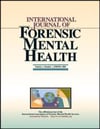
The MMPI-2-RF can be useful in characterizing defendants evaluated for Competency to Stand Trial and Criminal Responsibility, which will allow forensic examiners to have a better sense of what to expect in terms of MMPI-2-RF results from individuals undergoing such evaluations. This is the bottom line of a recently published article in The International Journal of Forensic Mental Health. Below is a summary of the research and findings as well as a translation of this research into practice.

Featured Article | The International Journal of Forensic Mental Health | 2017, Vol. 16, No. 4, 304-312
Using the MMPI-2-RF to Characterize Defendants Evaluated for Competency to Stand Trial and Criminal Responsibility
Authors
Martin Sellbom, Department of Psychology, University of Otago, Dunedin, New Zealand
Abstract
This study sought to provide more specific comparison groups for examiners using the MMPI-2-RF in criminal forensic evaluations, as well as to expand upon the existing literature by comparing defendants evaluated for Competency to Stand Trial (CST) and Criminal Responsibility (CR) on psychological functioning. In a large pre-trial criminal defendant sample (n D 486), significant differences were observed between defendants evaluated for CST and those evaluated for CR on scales reflecting emotional and externalizing dysfunction, but not thought dysfunction. Moreover, those opined competent to stand trial by forensic examiners scored lower than those opined incompetent on measures of psychoticism/paranoia, whereas those opined not criminally responsible were less likely to exhibit externalizing psychopathology relative to those opined to be criminally responsible. Implications for forensic psychology practice are discussed.
Keywords
MMPI-2-RF, personality assessment, criminal responsibility, competency to stand trial
Summary of the Research
“Competency to Stand Trial (CST) and Criminal Responsibility (CR) are among the most frequent psycho-legal questions addressed in criminal proceedings in the United States. For instance, CST evaluations comprise approximately 20–30% of all criminal forensic evaluations. Forensic examiners frequently rely on psychological testing to elaborate on the psychological status of defendants undergoing such evaluations. The most recent available surveys on forensic test usage indicated that the Minnesota Multiphasic Personality Inventory-2 (MMPI-2) was the most frequently used test instrument in forensic evaluations. The most recent version of this test, the MMPI-2 Restructured Form, has not yet been studied with respect to CST and CR evaluations. Furthering this knowledge base is critical in light of its emergent use in clinical and forensic practice” (p. 305).
“Although normative data based on large nationally representative samples are key to the interpretation of psychological test scores generally, the presence of comparison groups specific to the evaluation at hand are important. The MMPI-2-RF has adopted comparison groups from a variety of settings, including various forensic settings. In particular, the test publisher has made a pre-trial criminal comparison group available that forensic examiners can use for targeted comparisons to determine whether a defendant’s scores are typical of or deviate meaningfully from scores of others who undergo these evaluations. However, the current criminal pre-trial group available for the MMPI-2-RF consists of a heterogeneous collection of defendants (e.g., those evaluated for drug intervention in lieu of conviction in addition to CST and CR). Therefore, a more specific comparison group for use with the most common pre-trial forensic evaluations (i.e., CST and CR) would be very useful to forensic examiners who employ the MMPI-2-RF in their testing arsenals” (p. 305).
“The current study had two broad aims. The primary goal was to determine specific mean MMPI-2-RF profiles for CST and CR groups, respectively, to provide more homogeneous comparison groups for examiners using the MMPI-2-RF in criminal forensic evaluations. As stated earlier, such groups can be useful in improving MMPI-2-RF interpretations via comparison data. We conducted analysis to determine whether defendants undergoing such evaluations would be different from one another, as such findings would warrant separate comparison groups. On the other hand, if the differences were minimal, combined CST/CR comparison groups could be considered. Second, and more broadly, the study aimed to extend the literature on the psychological status of defendants evaluated for CST and CR by directly comparing these groups using an omnibus personality inventory on over-reporting response styles, clinical symptoms and maladaptive personality traits that go beyond diagnosis” (p. 305).
“Findings indicate that the MMPI-2-RF can be useful in characterizing defendants evaluated for CST and CR, which will allow forensic examiners to have a better sense of what to expect in terms of MMPI-2-RF results from individuals undergoing such evaluations. Those evaluated for CR exhibited higher rates of emotional and behavioral dysfunction relative to those evaluated for CST only; however, the groups are comparable with respect to thought dysfunction. Not surprisingly in light of the extant literature, those opined competent or criminally responsible exhibited higher levels of both over-reporting of psychopathology and externalizing disorder symptoms. Overall, these findings provide forensic examiners with access to more specific comparison groups (i.e., CST and/or CR) as they use the MMPI-2-RF in these types of evaluations” (p. 307-309).
“The MMPI-2-RF Validity scales also revealed an interesting pattern of findings that are consistent with intuitive expectations. Individuals referred for CR evaluations (arguably higher stakes than CST) scored higher on Validity scales indicative of over-reporting and had higher rates of individuals meeting threshold for over-reporting compared to those for CST-only, suggesting that individuals undergoing such evaluations might have a greater incentive to present themselves in a more exaggerated manner. These findings are not unexpected given that the rates of malingering likely increase as the external incentives for such behavior increase. Furthermore, those defendants opined by the forensic examiners to meet the criteria for incompetence to stand trial or NCR scored significantly lower on scales indicative of over-reporting and exhibited lower rates of outright over-reporting (which would be potential evidence for malingering). These findings also make intuitive sense, as such individuals who over-report would be less likely to be opined to meet such psycho-legal standards. Interestingly, however, some individuals opined incompetent to stand trial (11.9%) presented with over-reporting profiles (unlike NCR for whom the rate was 0%), indicating that forensic examiners might be more lenient in opining incompetence relative to NCR in light of potential feigning” (p. 311).
Translating Research into Practice
“Overall, the current findings increment the already consistent previous literature focusing on specific mental health disorders that the same pattern of findings emerge when using dimensional symptom measures as opposed to categorical diagnoses. This increment is important in light of the ever intense discussion of the clinical utility of dimensional psychopathology constructs, including in forensic psychology practice, as symptom measures very much conform to clinical expectations and also allow for the documentation of severity level unlike diagnostic categories. Indeed, dimensional symptom measures are better suited to forensic psychology decision-making, as different decisions can be better linked to different severity thresholds in light of the psycho-legal question posed” (p. 311).
“The current findings have explicit implications for forensic examiners who use the MMPI-2-RF in CST and CR evaluations. The MMPI-2-RF scales are likely to yield scores that are consistent with extant research on CST and CR defendant characteristics. As such, using these findings will allow forensic examiners to compare the MMPI-2-RF scores of those individuals whom they evaluate to typical CST and CR defendants (including those referred to both types of evaluations). Such comparisons will allow the clinician to determine the degree to which scores are typical or atypical. For instance, the individual might be engaging in greater levels of over- or underreporting than would be expected in this context, or might be exhibiting greater levels of persecutory ideation but lower levels of externalizing proclivities than typical of this setting. This information could be beneficial for the forensic examiner conducting CST or CR evaluation as such individuals might present in a way more reflective of those with serious mental health problems qualifying for incomptency or NCR. Of course, it is also important that forensic examiners consider that these profiles will not be indicative of individuals who qualify for competency vs. incompetency to stand trial or CR vs. NCR, as they only reflect mean-level distributions. Furthermore, these are to be viewed solely as comparison groups and not actual normative data for forensic settings, which is in line with current recommended practice for MMPI-2-RF interpretation” (p. 311).
Other Interesting Tidbits for Researchers and Clinicians
“First, although the sample sizes are relatively large for this type of study, they are derived from only one forensic clinic in the Midwestern part of the U.S. The sample is also somewhat old, and thus, replication in more recent samples is necessary, though it is worth noting that empirical data indicate that MMPI-2-RF scale scores have not changed meaningfully since the 1980s. Furthermore, statistical power was clearly a concern when divided into specific evaluation types, and therefore an a priori alpha level of .05 was used. This decision has the potential for generating a substantial number of Type I errors, but was made in the balance of identifying potentially novel findings with observed meaningful effects. The sample size for those opined NCR, in particular, was too small for meaningful statistical power; the findings are nonetheless presented in light of the novelty of these types of data. Information about CR vs. NCR defendants remains scarce, and to this author’s knowledge, no previous study has used an objective, multiscale symptom inventory to characterize such defendants. Nevertheless, it will therefore be important for future research to replicate these findings in using other samples. Another avenue for future inquiry would be to incorporate potential outcome data relevant to CR and CST evaluations for systematic examination of predictive validity of MMPI-2-RF scale scores obtained in these evaluations” (p. 311-312).
Join the Discussion
As always, please join the discussion below if you have thoughts or comments to add!





















